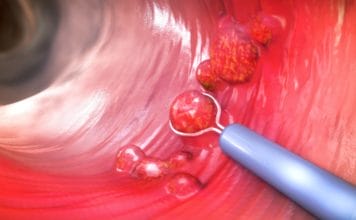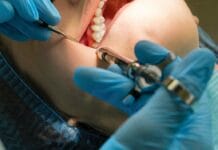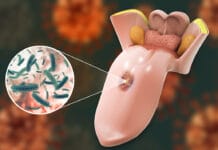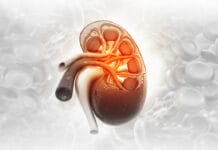1. The two components of pain are pain perception and pain reaction.
There are two components of pain. Pain perception is the physical process of receiving pain based on neurological experience. Pain reaction is the personal interpretation of pain; this can be highly variable between individuals.
Wilkins, E.M. (2009). Anxiety and Pain Control. In D.J. Stach, Clinical Practice of the Dental Hygienist (10th ed., pp.584-607). Lippincott Williams & Wilkins, a Wolters Kluwer business.
2. Factors such as age, fatigue, and cultural and ethnic behaviors can influence pain reactions. The presence of anxiety plays little role in an individual's pain reaction.
Factors influencing pain reaction include age, fatigue, emotional state, and cultural and ethnic learned behaviors. The presence of anxiety is significant in the pain reaction, as patients with anxiety are predisposed to feel pain. Therefore proper pain and anxiety management are pertinent for a successful dental experience for both the patient and the dental professional.
Wilkins, E.M. (2009). Anxiety and Pain Control. In D.J. Stach, Clinical Practice of the Dental Hygienist (10th ed., pp.584-607). Lippincott Williams & Wilkins, a Wolters Kluwer business.
3. Which of the following are categories of pain control mechanisms used during dental hygiene care?
There are five categories of pain management that can be utilized during dental hygiene care. These methods can be used alone or in conjunction with each other depending on the patient's level of pain and anxiety.
- Removal of the pain stimulus: correcting faulty pain-causing instrument technique
- Block the pain pathway: local and topical anesthetics
- Raise pain reaction threshold: nitrous oxide, NSAIDs
- Depress the central nervous system: general anesthesia
- Psychosedation methods: relaxation and distraction techniques
Wilkins, E.M. (2009). Anxiety and Pain Control. In D.J. Stach, Clinical Practice of the Dental Hygienist (10th ed., pp.584-607). Lippincott Williams & Wilkins, a Wolters Kluwer business.
4. All of the following are contraindications for the use of nitrous oxide EXCEPT:
Because nitrous oxide is not metabolized in the body and remains unchanged in blood and tissues, kidney and liver diseases are not contraindications for short-term use. However, because it enters and exits almost entirely through the lungs, diseases of the lungs are contraindication, such as COPD, emphysema, and chronic bronchitis. Recent ophthalmic surgery is a contraindication as the increased pressure on the eye could result in vision changes. Nitrous oxide disrupts vitamin B12 metabolism; therefore, nitrous oxide is contraindicated in individuals with severe B12 deficiency.
Wilkins, E.M. (2009). Anxiety and Pain Control. In D.J. Stach, Clinical Practice of the Dental Hygienist (10th ed., pp.584-607). Lippincott Williams & Wilkins, a Wolters Kluwer business.
Kräutler, B. Biochemistry of B12-cofactors in human metabolism. Subcell Biochem. 2012; 56: 323-346. doi:10.1007/978-94-007-2199-9_17. https://pubmed.ncbi.nlm.nih.gov/22116707/
5. All the following allergies should be considered when choosing a local anesthetic EXCEPT:
True allergies to epinephrine are exceedingly rare. Many patients mistake the effects of epinephrine for an allergy, but according to the American Academy of Allergy Asthma & Immunology, there are only two documented cases that have been confirmed. Though it is easy to avoid using epinephrine containing local anesthetics, a true allergy likely does not exist. However, amide allergies are true allergies that indicate the need to avoid all amide anesthetics. Additionally, sulfite, not sulfate allergies, and ester allergies are allergies that should be considered when choosing an appropriate local anesthetic.
Wilkins, E.M. (2009). Anxiety and Pain Control. In D.J. Stach, Clinical Practice of the Dental Hygienist (10th ed., pp.584-607). Lippincott Williams & Wilkins, a Wolters Kluwer business.
Epinephrine Allergy Rare. (2017, May 17). American Academy of Allergy Asthma & Immunology. https://www.aaaai.org/allergist-resources/ask-the-expert/answers/old-ask-the-experts/epinephrine-allergy
6. What is the maximum dose of non-injectable anesthesia (2.5% prilocaine/2.5% lidocaine periodontal gel)?
The maximum dose for non-injectable periodontal anesthetic gel (2.5% lidocaine/2.5% prilocaine) is five cartridges. Initial onset is 30 seconds with a duration is 14-31 minutes with an average duration of 20 minutes. Contraindications include amide allergy and methemoglobinemia.
Wilkins, E.M. (2009). Anxiety and Pain Control. In D.J. Stach, Clinical Practice of the Dental Hygienist (10th ed., pp.584-607). Lippincott Williams & Wilkins, a Wolters Kluwer business.
7. A topical anesthetic is used with varying degrees of success for short-duration desensitization of the gingiva. Absorption of the drug is key to successful desensitization, with attached gingiva being an area of prompt absorption.
A topical anesthetic is used with varying degrees of success. This is often due to the absorption of the drug, with varying success depending on the thickness of stratified squamous epithelial covering and the degree of keratinization. Prompt absorption occurs in tissues without keratinization, such as vestibular mucosa, while slow absorption occurs in keratinized tissue, such as attached gingiva and buccal mucosa. A topical anesthetic is likely not the best choice to manage sensitivity and discomfort in areas of attached gingiva.
Wilkins, E.M. (2009). Anxiety and Pain Control. In D.J. Stach, Clinical Practice of the Dental Hygienist (10th ed., pp.584-607). Lippincott Williams & Wilkins, a Wolters Kluwer business.












